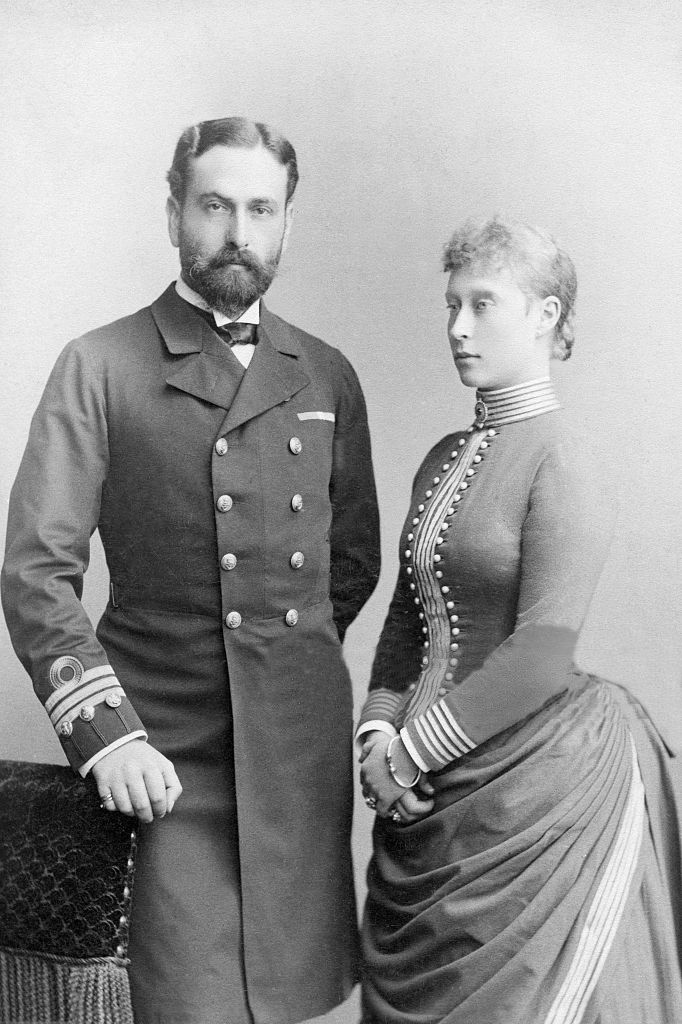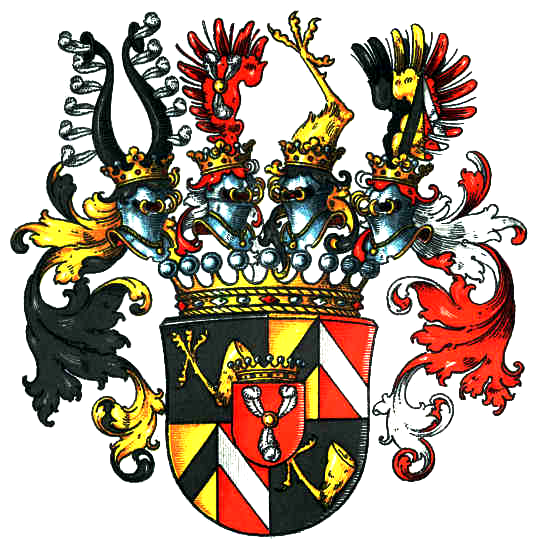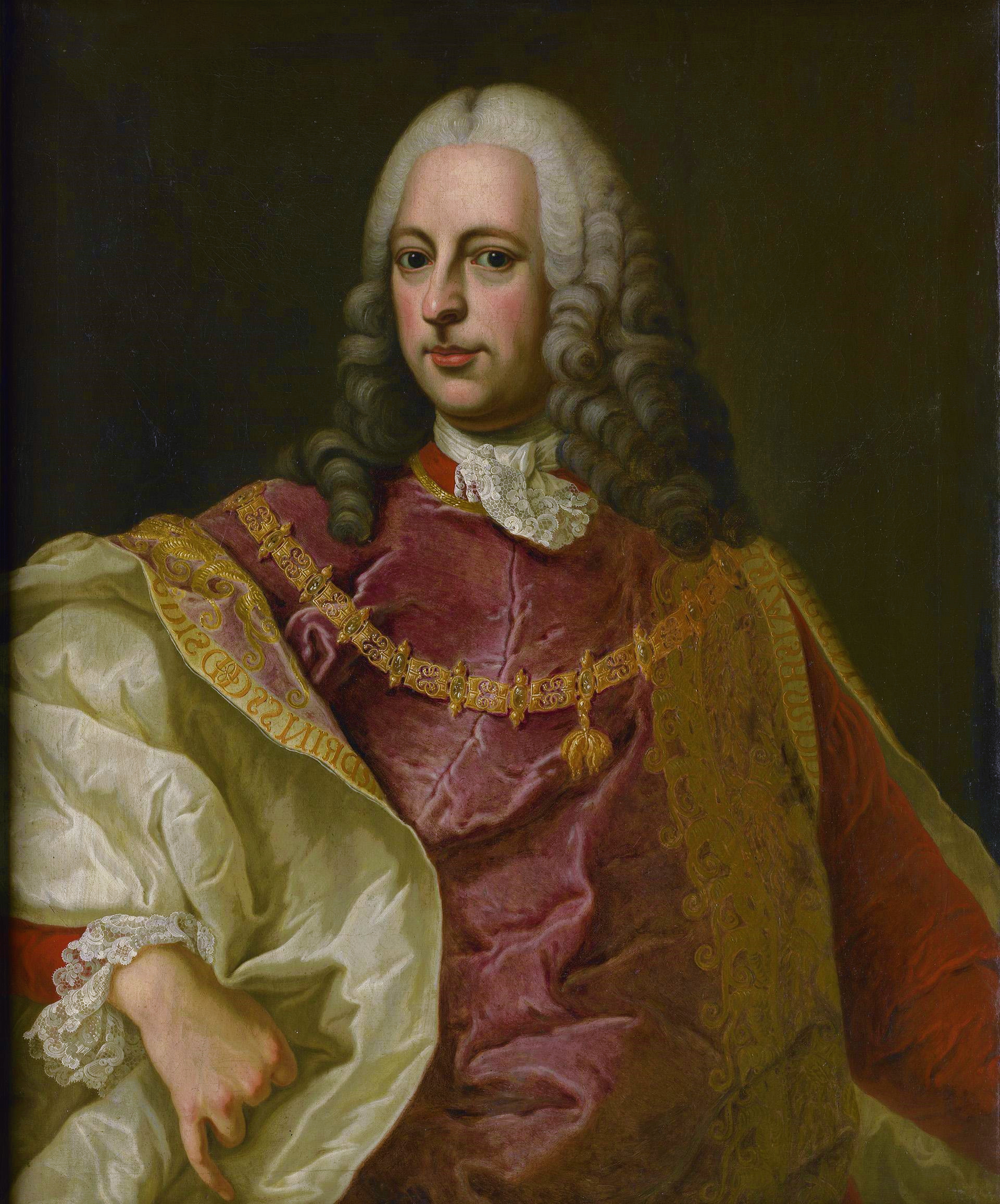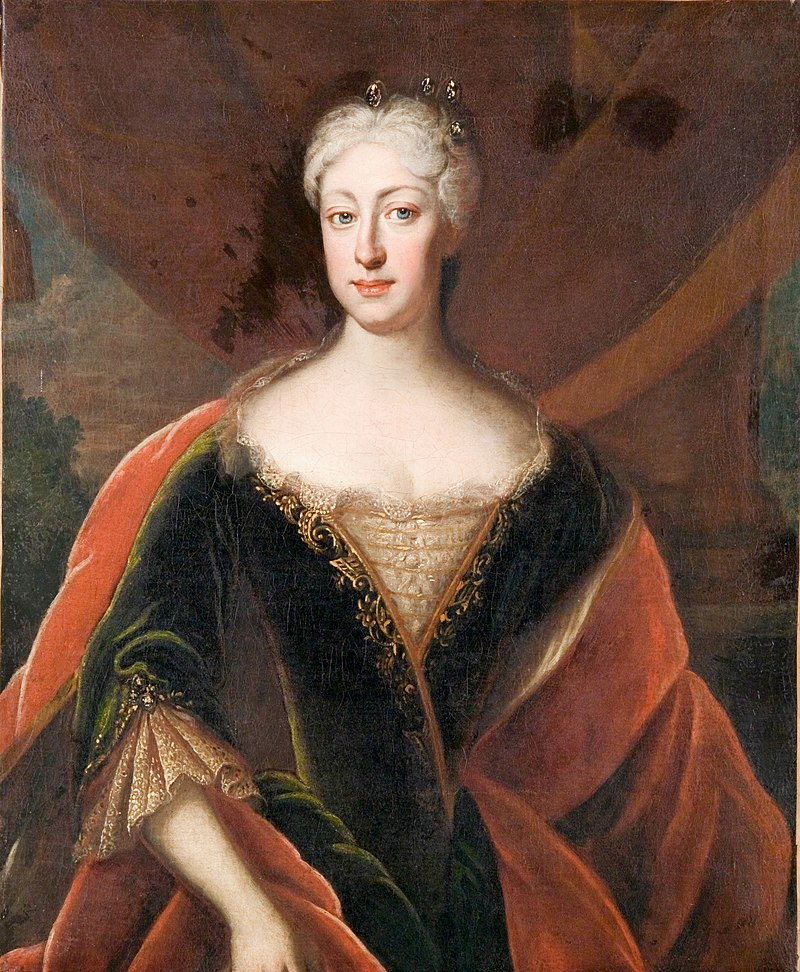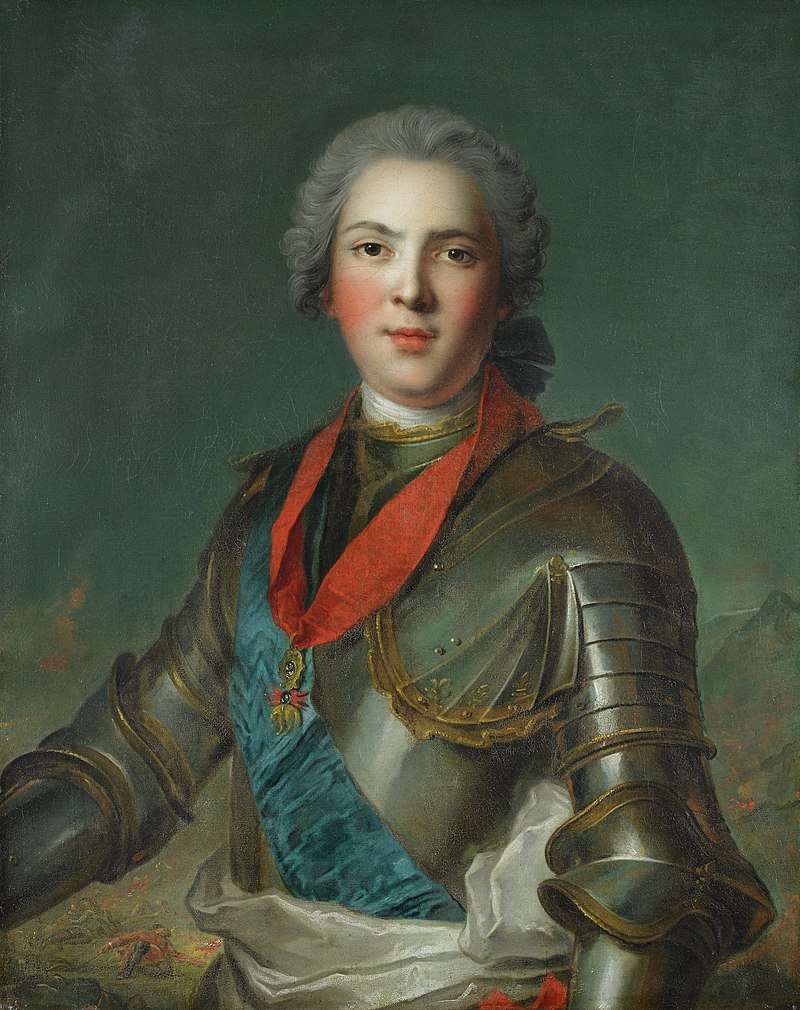by Susan Flantzer
© Unofficial Royalty 2023
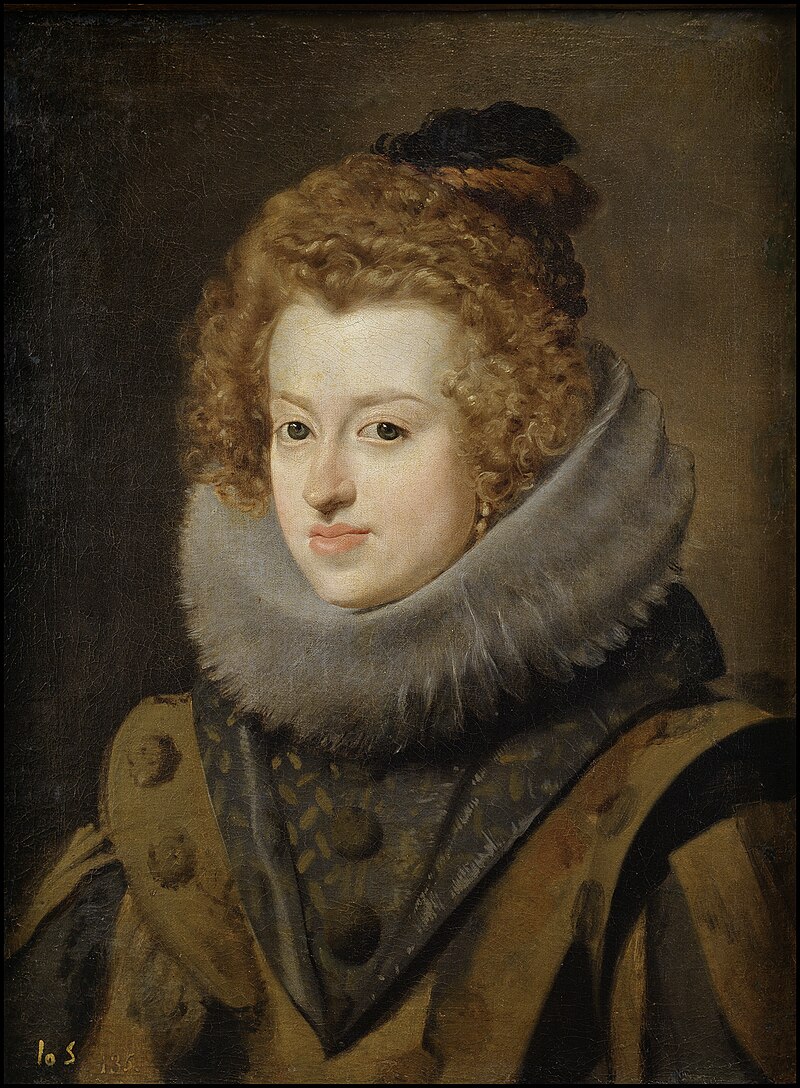
Maria Anna of Spain, Holy Roman Empress; Credit – Wikipedia
The Holy Roman Empire was a limited elective monarchy composed of hundreds of kingdoms, principalities, duchies, counties, prince-bishoprics, and Free Imperial Cities in central Europe. The Holy Roman Empire was not really holy since, after Holy Roman Emperor Charles V in 1530, no emperors were crowned by the pope or a bishop. It was not Roman but rather German because it was mainly in the regions of present-day Germany and Austria. It was an empire in name only – the territories it covered were mostly independent each with its own rulers. The Holy Roman Emperor directly ruled over only his family territories, and could not issue decrees and rule autonomously over the Holy Roman Empire. A Holy Roman Emperor was only as strong as his army and alliances, including marriage alliances, made him, and his power was severely restricted by the many sovereigns of the constituent monarchies of the Holy Roman Empire. From the 13th century, prince-electors, or electors for short, elected the Holy Roman Emperor from among the sovereigns of the constituent states.
Frequently but not always, it was common practice to elect the deceased Holy Roman Emperor’s heir. The Holy Roman Empire was an elective monarchy. No person had a legal right to the succession simply because he was related to the current Holy Roman Emperor. However, the Holy Roman Emperor could and often did, while still alive, have a relative (usually a son) elected to succeed him after his death. This elected heir apparent used the title King of the Romans.
********************
The first of the three wives of her first cousin Ferdinand III, Holy Roman Emperor, Maria Anna of Austria, Infanta of Spain and Portugal was born at the Palace of El Escorial, near Madrid on August 18, 1606. Although a Spanish Infanta, she was known as Maria Anna of Austria, as the Spanish monarchs at the time were members of the House of Habsburg. She was the fourth of the eight children and the third of the four daughters of Felipe III, King of Spain (also Filipe II, King of Portugal) and Archduchess Margarete of Austria. Maria Anna’s paternal grandparents were Felipe II, King of Spain and his fourth wife and niece Anna of Austria. Her maternal grandparents were Karl II, Archduke of Inner Austria and his niece Maria Anna of Bavaria.

Maria Anna with her brother Carlos who was one year younger, 1612; Credit – Wikipedia
Maria Anna had seven siblings:
- Anna of Austria, Infanta of Spain (1601 – 1666), married Louis XIII, King of France, had two sons Louis XIV, King of France and Philippe I, Duke of Orléans
- Maria of Austria, Infanta of Spain (born and died 1603)
- Felipe IV, King of Spain (1605 – 1665), married (1) Elisabeth of France, had eight children but only their youngest child survived childhood, Maria Theresia of Austria, Infanta of Spain who married her first cousin Louis XIV, King of France (2) Marianna of Austria, Maria Anna and Ferdinand III’s daughter, had five children but only two survived childhood, including Carlos II, King of Spain who had serious physical and mental conditions probably caused by the continued inbreeding of the House of Habsburg
- Carlos of Austria, Infante of Spain (1607 – 1632), unmarried
- Ferdinand of Austria, Cardinal-Infante of Spain (1609 – 1641), unmarried
- Margarita of Austria, Infanta of Spain (1610 – 1617), died in childhood
- Alonso of Austria, Infante of Spain (1611 – 1612), died in infancy
Maria Anna was raised at the Royal Alcazar of Madrid in Spain in a very close and loving family. She was given a very strong religious upbringing and often visited convents and churches. After her mother’s death in childbirth in 1611, Maria Anna’s eldest sister Anna became a surrogate mother to her younger siblings. Before she was thirteen years old, Maria Anna was betrothed to marry Archduke Johann Karl of Austria, at that time, the eldest surviving son of Ferdinand II, Holy Roman Emperor and his first wife, Maria Anna of Bavaria. However, in 1619, Archduke Johann Karl suddenly died.
Before Maria Anna’s father died in 1621, he and King James I of England tried to arrange a marriage between James’ eldest son and heir, the future King Charles I, then the Prince of Wales, and Maria Anna. This possible marriage was known as the “Spanish Match” and caused a political crisis in both England and Scotland. In 1623, the Prince of Wales visited Madrid to meet Maria Anna. As it turned out there was no marriage. Charles refused to convert to Catholicism, and Maria Anna refused to marry a Protestant. Maria Anna’s brother, the new King of Spain, Felipe IV, was unwilling to enter into a dynastic marriage with the House of Stuart for political reasons.

Maria Anna’s husband Holy Roman Emperor Ferdinand III; Credit – Wikipedia
In 1626, Maria Anna was betrothed to her first cousin, then Archduke Ferdinand of Austria, the younger brother of her deceased first fiance, and now the heir of Ferdinand II, Holy Roman Emperor, Archduke of Inner Austria, King of Bohemia, King of Hungary and Croatia. Maria Anna’s mother Margarete of Austria was her fiance’s paternal aunt.
In December 1629, Maria Anna left Madrid, Spain to travel to Vienna, a journey that took more than a year. Because of an epidemic of the plague, Maria Anna’s ship was unable to dock in several ports. Finally, on January 26, 1631, Maria Anna arrived in the port city of Trieste (now in Italy), where she was greeted by Ferdinand’s brother Archduke Leopold Wilhelm. A proxy marriage was held that day with Leopold Wilhelm standing in for his brother. Leopold Wilhelm then escorted Maria Anna to Vienna.
Ferdinand did not trust the portraits that he had seen of Maria Anna and wanted to secretly see her before the in-person wedding. His Lord Chamberlain asked for an audience with Maria Anna, accompanied by some nobles, including her groom Ferdinand. Immediately pleased by what he saw, Ferdinand revealed himself and began to converse with Maria Anna in Spanish. The in-person marriage was held on February 20, 1631, in Vienna.

Maria Anna with her eldest child Ferdinand, 1634; Credit – Wikipedia
Maria Anna and Ferdinand had six children:
- Ferdinand, King of the Romans (1633 – 1654), unmarried, died from smallpox
- Archduchess Mariana of Austria (1634 – 1696), married (second wife) her maternal uncle Felipe IV, King of Spain, had five children but only two survived childhood including Carlos II, King of Spain who had serious physical and mental conditions probably caused by the continued inbreeding of the House of Habsburg
- Archduke Philipp August of Austria (1637 – 1639), died in early childhood
- Archduke Maximilian Thomas of Austria (1638 – 1639), died in infancy
- Leopold I, Holy Roman Emperor (1640 – 1705), married (1) his first cousin Margaret Theresa of Spain, had four children, only one survived childhood (2) Claudia Felicitas of Austria, had two children, both died in childhood (3) Eleonor Magdalene of Neuburg, had ten children, five survived childhood (Unofficial Royalty articles coming soon)
- Archduchess Maria of Austria (born and died 1646), died in infancy
Maria Anna’s father-in-law Ferdinand II, Holy Roman Emperor passed to his son Ferdinand the Habsburg hereditary lands in 1621, the crowns of Hungary and Croatia in 1625, and the crown of Bohemia in 1627. In 1636, Ferdinand II arranged for his son to be elected King of the Romans, ensuring he would be the next Holy Roman Emperor as Ferdinand III. On February 15, 1637, at the age of fifty-eight, Ferdinand II, Holy Roman Emperor died and his son was elected Holy Roman Emperor and Maria Anna became Holy Roman Empress.
Maria Anna brought Spanish fashion, theatre, dance, and music to the imperial court in Vienna. She collected artwork by Italian, Spanish, and Flemish masters of the late Renaissance and early Baroque periods. Maria Anna was active in politics, acted as an adviser to her husband, and was an important mediator between her husband and her Spanish relatives. During Ferdinand III’s absences from the court in Vienna, Maria Anna served as regent.

Tomb of Maria Anna & her infant daughter; Credit – By krischnig – de.wikipedia.org, CC0, https://commons.wikimedia.org/w/index.php?curid=51130106
Pregnant with her sixth child, 39-year-old Empress Maria Anna suddenly fell ill with a fever, had heavy bleeding, and died on May 13, 1646, at Linz Castle in Linz, Austria. Immediately after her death, the unborn child, a girl, was delivered by Cesarean section. She was named Maria after her mother but lived only a few hours. Both mother and daughter were placed in the same coffin and interred in the Imperial Crypt at the Capuchin Church in Vienna.
This article is the intellectual property of Unofficial Royalty and is NOT TO BE COPIED, EDITED, OR POSTED IN ANY FORM ON ANOTHER WEBSITE under any circumstances. It is permissible to use a link that directs to Unofficial Royalty.
Works Cited
- Flantzer, S. (2023) Ferdinand III, Holy Roman Emperor, Archduke of Lower and Inner Austria, King of Bohemia, King of Hungary and Croatia, Unofficial Royalty. Available at: https://www.unofficialroyalty.com/ferdinand-iii-holy-roman-emperor-archduke-of-lower-and-inner-austria-king-of-bohemia-king-of-hungary-and-croatia/ (Accessed: 26 June 2023).
- Maria Anna of Spain (2023) Wikipedia. Available at: https://en.wikipedia.org/wiki/Maria_Anna_of_Spain (Accessed: 26 June 2023).
- Мария Анна Испанская (2023) Wikipedia (Russian). Available at: https://ru.wikipedia.org/wiki/%D0%9C%D0%B0%D1%80%D0%B8%D1%8F_%D0%90%D0%BD%D0%BD%D0%B0_%D0%98%D1%81%D0%BF%D0%B0%D0%BD%D1%81%D0%BA%D0%B0%D1%8F (Accessed: 26 June 2023).
- Wheatcroft, Andrew. (1995) The Habsburgs. London: Viking.
- Wilson, Peter H. (2016) Heart of Europe – A History of the Holy Roman Empire. Cambridge, MA: Harvard University Press.




